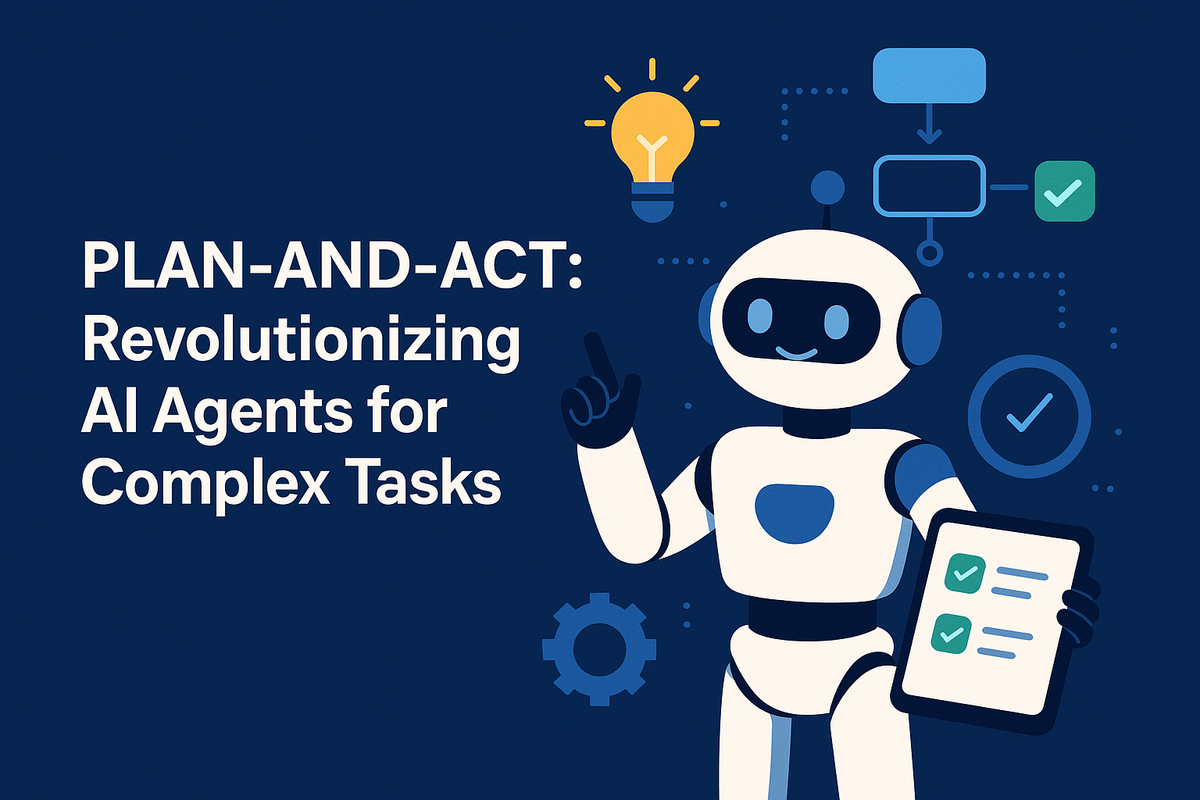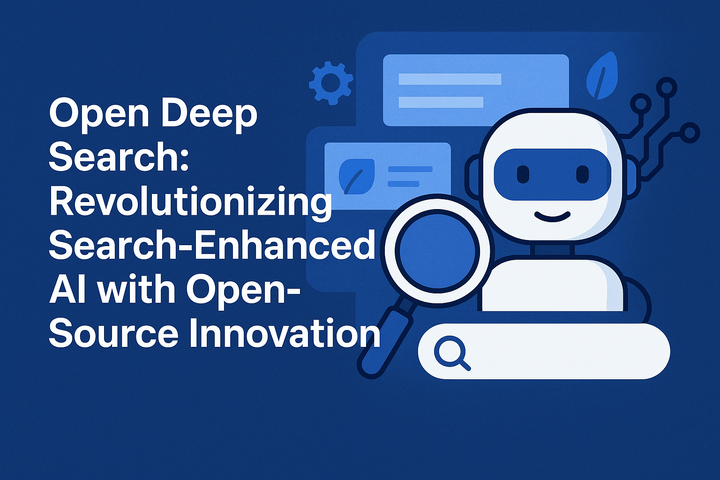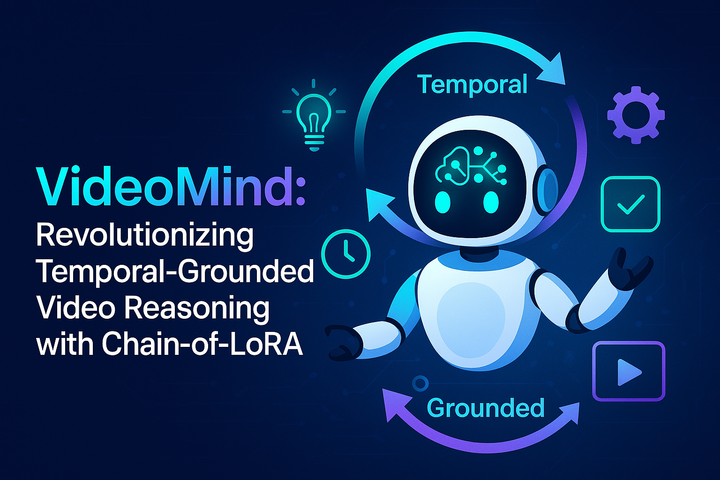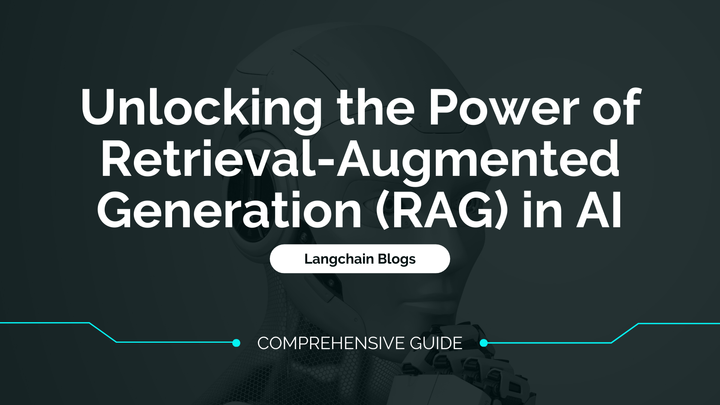PLAN-AND-ACT: Revolutionizing AI Agents for Complex Tasks
Discover how the PLAN-AND-ACT framework is transforming AI task execution by separating planning and execution, leveraging synthetic data, and achieving groundbreaking benchmarks.

Ever wondered why AI struggles with complex, multi-step tasks like booking travel or gathering data from the web? The challenge isn’t just about understanding what you ask—it’s about turning those words into precise actions that adapt to a dynamic digital environment. AI agents are making huge strides, but there’s still a long way to go when it comes to long-horizon tasks.
Take a look at Figure 1 below—it highlights some of the common hurdles AI faces in these situations.
Challenges in Existing Systems
So, what’s holding AI back? Past approaches like ReAct tried to handle reasoning and execution in one go but often got overwhelmed. Imagine trying to think and act at the same time—it’s like juggling while solving a puzzle. Reinforcement learning showed promise but proved to be unstable and needed a ton of environment-specific fine-tuning, which made scaling up impractical.
Even when these systems managed to perform, changing environments or unexpected scenarios often led to inconsistent results. Plus, training these systems required massive amounts of data that’s hard to collect.
Introduction to PLAN-AND-ACT
Here’s where the PLAN-AND-ACT framework makes a splash. This new system splits tasks into two clear roles:
- The PLANNER: Think of it as the strategist—it breaks the user’s goal into actionable steps.
- The EXECUTOR: This module takes each step and turns it into actions tailored to the specific environment.
By separating planning from execution, each module gets to focus on its strength, boosting overall reliability. Check out Figure 2 below—it dives into the modular design of PLAN-AND-ACT.
Use Case Diagram: Shows how the user interacts with the AI agent, and how the agent splits tasks between planning and execution.
Synthetic Data Generation
One of the biggest hurdles in training AI is the lack of good examples. To tackle this, researchers behind PLAN-AND-ACT came up with a clever synthetic data pipeline:
- First, they collected action trajectories—basically sequences showing how simulated agents interact with environments.
- Then, large language models converted these sequences into high-level plans, tying them to actual outcomes.
- They expanded the dataset with 10,000 synthetic plans and added 5,000 more plans based on failure analysis.
This approach saved time and produced quality training data that truly reflected real-world needs.
System Architecture Diagram: Maps the components of PLAN-AND-ACT, showing data flows and the relationship between the planner, executor, and synthetic data pipeline.
Performance Benchmarks
How does PLAN-AND-ACT stack up? The numbers speak for themselves:
- 53.94% success rate on the WebArena-Lite benchmark, beating the previous best of 49.1%.
- Without the PLANNER, a base EXECUTOR only managed 9.85% success.
- Adding a fine-tuned PLANNER boosted results to 44.24%, and dynamic replanning added another 10.31%.
Take a look at Figure 3 below for a side-by-side comparison of these results.
Conclusion
By separating planning and execution, PLAN-AND-ACT tackles a major pain point in AI systems—bridging the gap between understanding goals and acting on them. The modular design and synthetic data generation make this framework scalable and effective, with clear potential for broader applications.
If you’ve been intrigued by these ideas, stay tuned—this approach is bound to grow and influence future AI systems.
FAQs
Q: What is the PLAN-AND-ACT framework?
A: It’s a modular AI system that splits tasks into planning (strategy) and execution (action).
Q: How does PLAN-AND-ACT improve AI task execution?
A: By separating planning from execution, it allows each module to focus on its strength, improving reliability.
Q: What are the challenges in long-horizon tasks for AI?
A: Long tasks often involve dynamic environments and require consistent decisions over multiple steps, which AI struggles with.
Q: How is synthetic data used in PLAN-AND-ACT?
A: Researchers generated synthetic plans by analyzing simulated agent interactions and failure cases to improve training data.
Q: What benchmarks validate PLAN-AND-ACT's performance?
A: The framework achieved a success rate of 53.94% on the WebArena-Lite benchmark, outperforming older methods.





